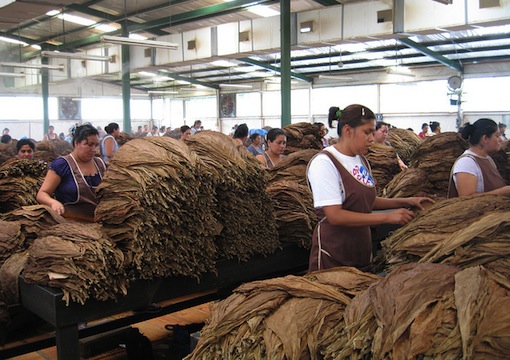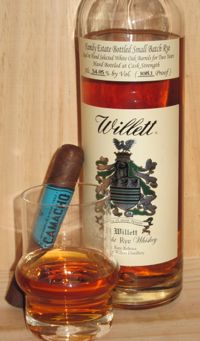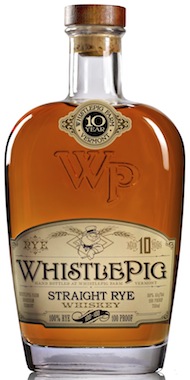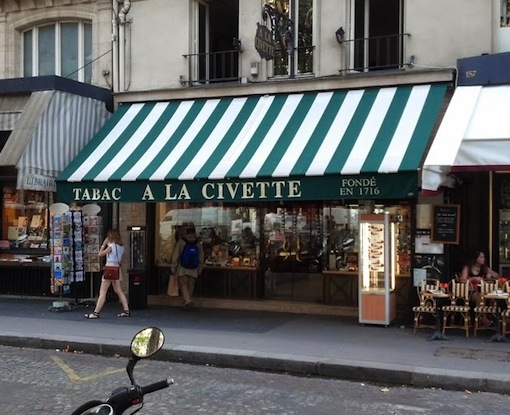
On Monday my colleague used a recent review and an old cigar assesment to highlight how individual cigar preferences can change over time. It’s something I suspect all seasoned cigar smokers have experienced.
Individual tastes change, but there are also larger trends among smokers (think Nicaraguan-heavy blends, larger ring gauges, Ecuadorian wrappers, etc.). Fortunately, the cigar industry is well-positioned to respond to smokers’ demands, even if this often goes unappreciated by those of who benefit.
Looking back over the past decade and you’ll see a pattern. One or two cigar makers find a hit with a certain blend, and soon after you see the market flooded with similar blends. The best (both in overall quality and in bang for the buck) stick around, while others fade away into online discount obscurity or are simply discontinued.
Some people might knock this follow-the-leader cycle, but it’s not a bad thing for the consumers who get the benefits of innovation and plenty of competition. Good marketing and brand loyalty only go so far, as eventually the cream rises to the top.
Contrast this with American whiskey, another industry I follow closely. Unlike cigars, the aging necessary for a fine bourbon or rye (four to six years at minimum, but sometimes multiple decades), means that it’s not possible to ramp up supply or introduce a new whiskey with only months or a year of planning.
The result is, for bourbon and rye, demand has recently overwhelmed supply (even the mainstream media has caught on) and brands that were recently staples on every liquor store shelf are now difficult to find, while limited releases are nearly impossible to track down unless you’re willing to pay exorbitant prices on the illegal secondary market. This is compounded by he fact that, unlike a box of cigars, a bottle of bourbon will remain unchanged in perpetuity (at least unopened), which leads people to horde their favorite brands in a way that you would never do with cigars. Plus you can have a decent amount of confidence buying a sealed bottle of bourbon from a relative stranger in a way you never could for cigars due to the importance of storage for cigars. (Consider this: There are brands of bourbon which I would buy a case of if I could find it at regular retail price, but I can’t come up with a single cigar, even those I’d like to find but can’t, that I’d buy more than a few boxes of.)
All of which is to say that cigar smokers have it pretty good. We have a vibrant free market that can relatively quickly produce new cigars to meet demand, with the largest multinational companies competing with small start-up brands on relatively even footing, each with its own competitive advantages.
All this is at risk from FDA regulations.
Pre-approval of new cigars means the introduction of new cigars would grind to a halt. Any cigar that doesn’t meet the FDA’s exemption for premium cigars (and this takes the optimistic view that the FDA will even adopt an exemption) would suddenly require years of work, and likely tens of thousands of dollars or more, to receive approval.
With all the comments now under review, the FDA could issue its final rule in as soon as a few months, though more likely they will take a bit longer than that. And since the regulations will likely retroactively apply to cigars introduced in the past few years, it’s not just future brands that are at risk, but also many of the newer cigars you enjoy today.
There was a time when a cigar smoker smoked one or two brands their entire life. (Think about the elderly guy at your local shop who still buys a box of Punch or La Glorias every month like clockwork, always the same cigar.) If FDA regulations hit in a way similar to how they were proposed, we may return to those days, but not because smokers are loyal to a brand out of choice, but because there are virtually no new cigars (at least those under $10 or some other arbitrary amount) to try.
It’s a scary thought and unfortunately one that probably won’t worry the bureaucrats at the FDA. Let’s just hope enough cigar smokers weighed in to let them know they care.
–Patrick S
photo credit: Stogie Guys
![]()



 Willett has been bottling good rye for a while now, but up until a few years ago they didn’t distill any of it (at least since the 1970s). Companies, especially new ones, that bottle and brand whiskey made elsewhere are a dime a dozen (and that’s not a knock as some of it is quite good). Though Willett isn’t a new name in the whiskey game.
Willett has been bottling good rye for a while now, but up until a few years ago they didn’t distill any of it (at least since the 1970s). Companies, especially new ones, that bottle and brand whiskey made elsewhere are a dime a dozen (and that’s not a knock as some of it is quite good). Though Willett isn’t a new name in the whiskey game.
 That makes them similar, but not identical. From a technical aspect, the difference is proof: Jefferson’s (10 year, 94-proof), Whistlepig (10 year, 100-proof), and Masterson’s (10 year, 90-proof). Having tasted all three, it’s clear each has a character all its own.
That makes them similar, but not identical. From a technical aspect, the difference is proof: Jefferson’s (10 year, 94-proof), Whistlepig (10 year, 100-proof), and Masterson’s (10 year, 90-proof). Having tasted all three, it’s clear each has a character all its own.

 Patrick Ashby
Co-Founder & Editor in Chief
Patrick Ashby
Co-Founder & Editor in Chief Patrick Semmens
Co-Founder & Publisher
Patrick Semmens
Co-Founder & Publisher George Edmonson
Tampa Bureau Chief
George Edmonson
Tampa Bureau Chief